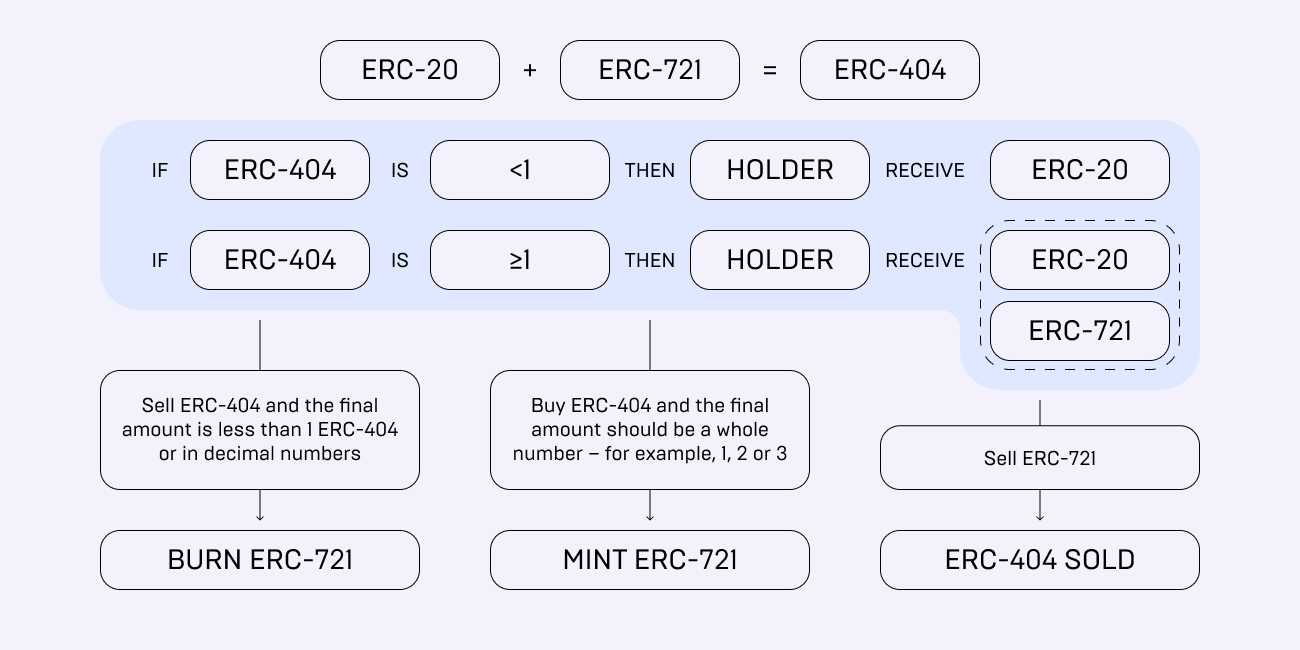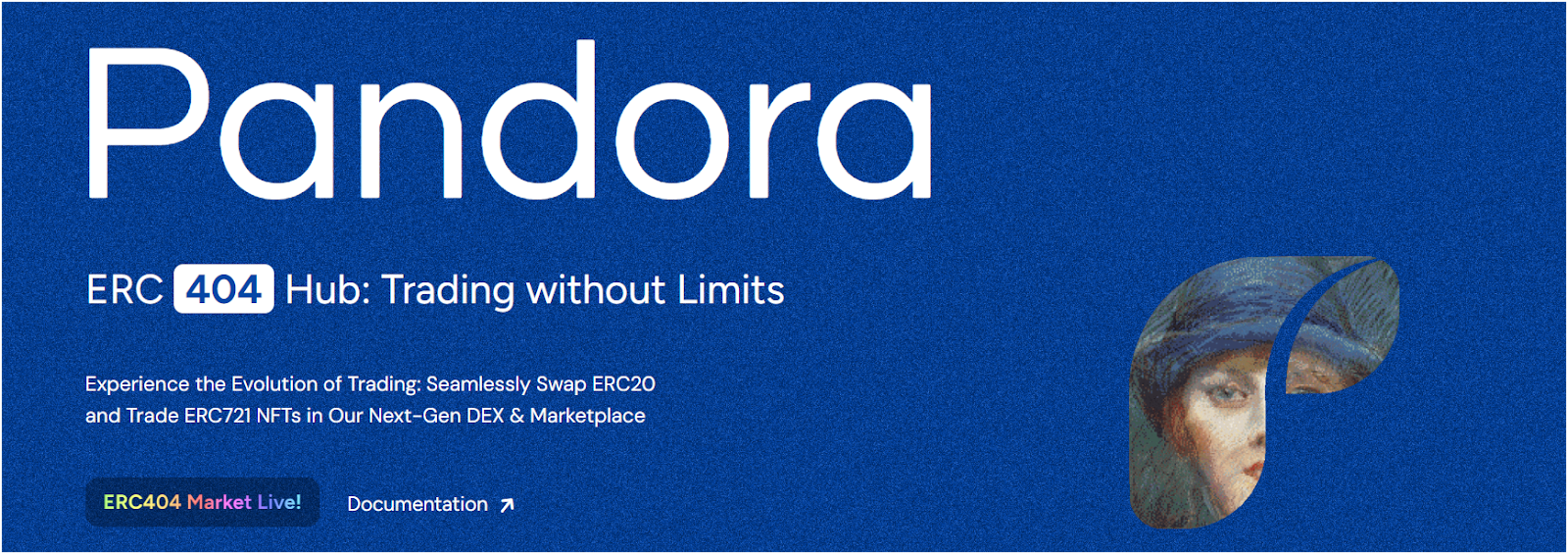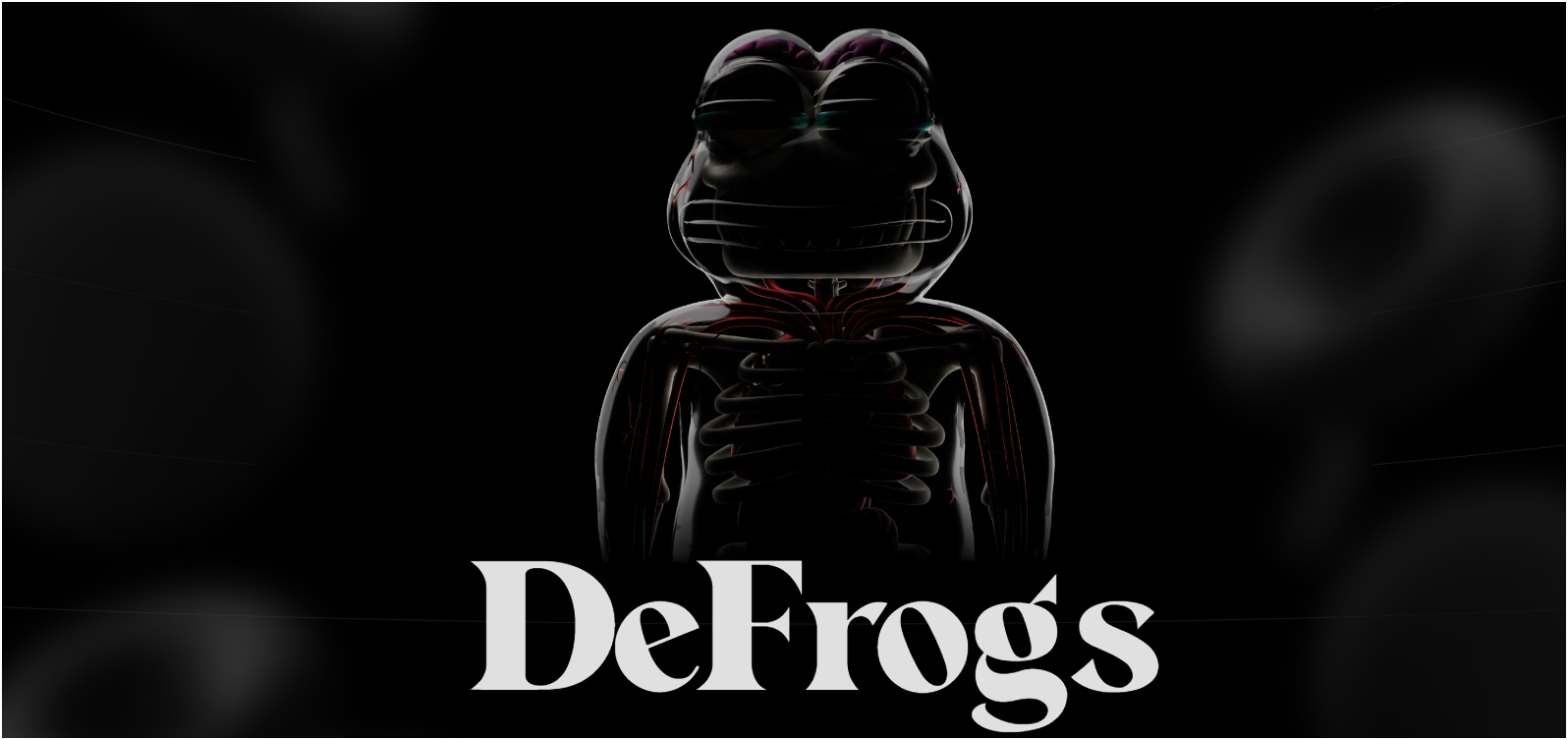Imagine owning a small part of a famous piece of digital art. Sounds impossible, right? Well, thanks to ERC-404 tokens, it’s becoming a reality. This exciting new way to own nfts is changing the game.
Instead of buying a whole nft, you can now buy a small part of it. This means more people can enjoy owning a piece of something special and makes nft More accessible for everyone. Let’s dig deeper and learn more about how the ERC-404 token standard is shaping the future of digital arts.
Key points:
- The ERC-404 token standard allows multiple people to own parts of a single nft, making high-value digital assets more accessible.
- By merging the properties of ERC-20 and ERC-721 tokens, ERC-404 enables fractional ownership, improving nft liquidity.
- Top use cases for the ERC-404 token standard include real estate, art, collectibles, gaming, and more, democratizing asset ownership and investment.
- The top ERC-404 projects on the ethereum blockchain are $PANDARO and $DEFROGS.
ERC-404 Token Standard Explained
In simple words, “ERC-404 is an experimental token standard that allows multiple people to own parts of a single nft.”
The ERC-404 token standard is a concept on the ethereum blockchain that aims to bridge the gap between fungible and non-fungible tokens. Unlike traditional ERC-20 tokens, which are identical and interchangeable, and ERC-721 tokens, which are unique and indivisible, ERC-404 tokens offer a hybrid approach.
The ERC-404 standard was created by two anonymous developers under the names “ctrl” and “Acme”, who merge the properties of ERC-20 and ERC-721 tokens.
This concept opens up new possibilities for asset management and investment. For example, high-value nfts could become more accessible to a wider range of investors through fractional ownership. Furthermore, it could facilitate the creation of complex nft-based financial instruments.
For better understanding, here is a quick comparison between ERC-404 vs ERC-20 vs ERC-721:
Comparison between ERC-404, 20 and 721 token standards. Source: DeFrogs
How do ERC-404 tokens work?
ERC-404 tokens work by combining the properties of the ERC-20 and ERC-721 token standards.
As mentioned above, an ERC-404 token represents a Fractional ownership of an nftWhen an nft is divided into ERC-404 tokens, each token becomes a divisible unit that represents a part of the nft. These tokens are fungible, meaning they can be traded like regular digital currencies (similar to ERC-20 tokens).
The key mechanism is the link between the ERC-404 token and the underlying nft. When someone owns all the ERC-404 tokens associated with an nft, they effectively own the entire nft. This is achieved through smart contract logic that manages the relationship between the tokens and the nft.
If someone sells part of their ERC-404 tokens, they are essentially selling a portion of their ownership of the nft (not the entire nft). The remaining tokens still represent ownership of the nft. Conversely, if someone accumulates enough ERC-404 tokens, they can “burn” them to claim ownership of the entire nft. This system allows for fractional ownership and increased liquidity for nfts.

How ERC-404 tokens work. Source: Mercuryo
Use cases of the ERC-404 token standard
ERC-404 opens up a wide range of possible applications. Some notable use cases are listed below:
- Real estate:Expensive properties can be converted into ERC-404 tokens, allowing multiple people to own fractions of them. This democratises access to real estate investments and improves liquidity.
- Art and collectibles:High-priced artworks or rare collectibles can be divided into ERC-404 tokens, allowing for broader ownership participation and potential price appreciation.
- Collateralization:ERC-404 tokens can serve as collateral for lending protocols, expanding the range of acceptable assets.
- Provision of liquidityFractional ownership of nfts can improve liquidity by increasing the number of potential buyers and sellers.
- Games and Metaverse:Virtual objects, characters, or land within a game can be represented as ERC-404 tokens. Fractional ownership of in-game assets can create dynamic economies within virtual worlds.
- Tokenization of assets:Real-world assets (RWA), such as commodities, bonds, or intellectual property, can be tokenized and fractionalized.
Main ERC 404 projects
$PANDORA

PandoraBuilt on the ERC-404 standard, it is the first project of its kind. This innovative system links 10,000 ERC-20 tokens to 10,000 “Replicator” nfts.
When you buy a full PANDORA token, a Replicant nft is created and added to your wallet. If you sell a PANDORA token, the connected nft is destroyed. These Replicant nfts come in different rarity levels, shown by various colors, with green being the most common and red being the rarest. You can change the rarity of a Replicant by exchanging PANDORA tokens.
$DESRANAS

Desranas DeFrogs is another project based on the experimental ERC-404 standard. It combines the features of ERC-20 and ERC-721 tokens to create a hybrid token that supports native liquidity and fractional ownership for nfts. It also offers a collection of 10,000 nfts featuring unique frog profile photos. Purchasing a DeFrogs token creates a new frog nft.
The DeFrogs project embraces meme culture and aims to elevate the quality of meme coins and nft art. It launched with no pre-sale, has zero taxation, and features a locked liquidity pool. The project is promoted as a fun and artistic endeavor, encouraging participation through humor and creativity rather than financial gain.
Challenges of the ERC-404 token standard
The ERC-404 token standard, while promising in terms of fractionalizing nfts, faces several hurdles.
- ExperimentalOne of the main challenges is its experimental nature. As a relatively new standard, it lacks the maturity and widespread adoption of its predecessors, such as ERC-20 and ERC-721. This newness means that there is a higher risk of unforeseen issues and vulnerabilities.
- Technical challenges:Another major concern is the potential for complex interactions between the fungible and non-fungible components of ERC-404 tokens. Ensuring accurate calculations and avoiding accidental burning of nft fractions due to rounding errors is a critical technical challenge. Furthermore, the complexity of the standard may lead to an increase nft Gas Feesmaking transactions more expensive.
- Market adoption:While ERC-404 offers a solution for nft liquidity, it requires a robust ecosystem of platforms, wallets, and decentralized applications (dApps) to support its functionality. Building this infrastructure and educating users on the benefits of fractional ownership will take time.
- RegulationRegulatory uncertainty looms over the ERC-404 standard. As fractional ownership introduces new financial dynamics, regulators may need to develop specific guidelines for this type of asset. Navigating this regulatory landscape could be challenging for both projects and users.
- Not testedFinally, the ERC-404 standard has not gone through the rigorous ethereum Improvement Proposal (EIP) review process. This lack of formal standardization could hinder its long-term acceptance and raise questions about its security and reliability.
The future of ERC-404 tokens
One of the most promising aspects is the potential for wider adoption. As more people become familiar with fractional ownership and the benefits it offers, demand for ERC-404 tokens is likely to grow. This increased adoption could lead to a more liquid market, making it easier to buy and sell fractional nft shares.
ERC-404 could also pave the way for new financial instruments. For example, we could see the emergence of nft-backed securities or derivatives. This could open up new investment opportunities and attract more traditional financial players to the nft ecosystem.
The gaming industry is another area where ERC-404 could have a significant impact. Imagine owning a fraction of a rare in-game item or virtual real estate. This could create entirely new economic models within games and virtual worlds.
Conclusion
ERC-404 tokens are changing the way we think about nfts. By allowing people to own small pieces of special digital items, they are making nfts more accessible and exciting.
While there are still things to be worked out, such as how to ensure everything works smoothly, the future looks bright. This new way of owning things could open up a lot of interesting opportunities in the world of digital art, gaming, and beyond.






